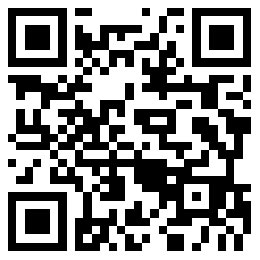如何鏟除流氓交易員
|
????流氓交易員也是一種“黑天鵝”現(xiàn)象,,罕見(jiàn)卻極端危險(xiǎn),。盡管金融和大宗商品交易公司通常擁有極其先進(jìn)的信息技術(shù)和分析手段,流氓交易員還是能給他們?cè)斐蓢?yán)重?fù)p失,。原因可能就在于公司面臨著創(chuàng)收的巨大壓力,,有意或無(wú)意地忽視了風(fēng)險(xiǎn)意識(shí)文化的貫徹,也沒(méi)有采用支持公司交易和風(fēng)險(xiǎn)管理所必需的技術(shù)手段,。 ????流氓交易意味著公司風(fēng)險(xiǎn)管理的全面破產(chǎn),,包括公司治理、文化,、流程和技術(shù)的問(wèn)題,。用以預(yù)防流氓交易的風(fēng)險(xiǎn)管理措施不僅僅應(yīng)該是全面的,還應(yīng)該是整體的,、有機(jī)結(jié)合的。而經(jīng)常發(fā)生的情況是,,組織內(nèi)部的“筒倉(cāng)效應(yīng)”(近鄰的相互隔絕)妨礙了風(fēng)險(xiǎn)管理架構(gòu)和責(zé)任的有效結(jié)合,。整合措施的缺口和前中后臺(tái)的分割被流氓交易員利用。此外,,創(chuàng)收的壓力下甚至可能滋生流氓交易文化,,讓人們對(duì)明星交易員的違規(guī)行為視而不見(jiàn)。雖然這些人代表著在短期內(nèi)產(chǎn)生巨大利潤(rùn)的機(jī)會(huì),,但這種放任自流的行為可能導(dǎo)致災(zāi)難性的后果,。 ????埃森哲(Accenture)最近的一項(xiàng)風(fēng)險(xiǎn)管理研究調(diào)查了來(lái)自不同產(chǎn)業(yè)的數(shù)百名高管,發(fā)現(xiàn)他們?cè)诮灰讟I(yè)務(wù)中面臨前所未有的巨大風(fēng)險(xiǎn),。而領(lǐng)先公司在實(shí)踐有效管理風(fēng)險(xiǎn)的努力中著重于四個(gè)關(guān)鍵元素: ????1. 治理,。風(fēng)險(xiǎn)治理結(jié)構(gòu)或者內(nèi)部風(fēng)控體系中最基本的是風(fēng)險(xiǎn)管理委員會(huì),然后延伸至董事會(huì)以及如下的部門(mén):內(nèi)部審計(jì),、戰(zhàn)略,、計(jì)劃、安全管理,、法律,、金融、稅務(wù),、庫(kù)務(wù),、會(huì)計(jì)和信息技術(shù)。我們的研究表明,,風(fēng)險(xiǎn)管理責(zé)任到人是另一個(gè)關(guān)鍵問(wèn)題:專職官員(一般職務(wù)為首席風(fēng)險(xiǎn)官)負(fù)責(zé)必不可少,。 ????設(shè)立了首席風(fēng)險(xiǎn)官的職位并不意味著這名官員就一定會(huì)成功。很多大型資本市場(chǎng)和大宗商品交易公司的首席風(fēng)險(xiǎn)官難以保持獨(dú)立,,也得不到足夠的支持來(lái)對(duì)抗交易部門(mén),。而領(lǐng)先公司通常設(shè)立獨(dú)立的風(fēng)險(xiǎn)委員會(huì)來(lái)評(píng)估交易頭寸,,同時(shí),首席風(fēng)險(xiǎn)官直接向董事會(huì)報(bào)告,。 ????在交易和風(fēng)險(xiǎn)管理部門(mén)內(nèi)部,,前中后臺(tái)之間的報(bào)告關(guān)系必須分割開(kāi)來(lái)。如果沒(méi)有依托強(qiáng)勁的治理結(jié)構(gòu)對(duì)交易活動(dòng)的報(bào)告和核對(duì)進(jìn)行明晰的制衡,,利益沖突就可能發(fā)生,。 ????2. 文化。再?gòu)?qiáng)的系統(tǒng)和措施也可能被為追求利益而不擇手段的人挫敗,。系統(tǒng)可能在關(guān)鍵時(shí)刻掉鏈子,,導(dǎo)致嚴(yán)重后果。業(yè)界領(lǐng)先的風(fēng)險(xiǎn)管理組織注重風(fēng)險(xiǎn)和回報(bào)之間的微妙平衡,,也有方便的措施來(lái)降低風(fēng)險(xiǎn),。忽略風(fēng)險(xiǎn)和回報(bào)平衡的薪酬結(jié)構(gòu)會(huì)造成承擔(dān)過(guò)度風(fēng)險(xiǎn)的環(huán)境。 |
????Rogue traders are rare but can be extremely dangerous. They can cause major losses, despite the fact that financial and commodity trading firms are generally extremely sophisticated in their use of information technology and analytics. Companies facing immense pressure to generate revenue, however, do not always implement the risk-aware culture and implement the capabilities needed to support their trading and risk management operations. ????Rogue trading reflects a breakdown of a firm's risk management governance, culture, processes and technology. Risk management practices designed to prevent rogue trading must be comprehensive but also holistic and integrated. All too often, organizational "silos" prevent effective integration of risk management structures and responsibilities. Gaps in integrated practices and segmentation of front, mid and back offices have been exploited by rogue traders. In addition, the pressure for revenue can incubate a rogue trading culture that turns a blind eye toward the behavior of star traders. Although such individuals represent opportunities to make significant profits in a short period of time, these behaviors can lead to serious consequences. ????Accenture's recent Risk Management Research surveyed hundreds of executives across many industries, and found that senior managers face more and larger risks in their trading operations than ever before. We see leading practice companies addressing four key elements in their efforts to manage risk effectively: ????1. Governance. A governance structure or internal control system should start with a Risk Management Committee and then extend to the board of directors as well as the following functions: Internal audit, strategy, planning, security management, legal, finance, tax, treasury, accounting and IT. Our research indicates that ownership of risk management is another key issue; having a dedicated executive in place – often called the Chief Risk Officer (CRO) – is essential to mastering this problem. ????Having a CRO in place, however, is not enough to make that executive successful. Many CROs at large capital markets and commodity trading firms struggle with independence and the necessary support to stand up to the trading organization. Leading companies often use an independent risk committee to assess positions, and also have the CRO report directly to the Board of Directors. ????Within the trading and risk management organization, reporting relationships between front, mid and back offices need to be segmented. Conflict of interest can arise in absence of a robust governance structure of clear checks and balances in reporting and reconciling trading activities. ????2. Culture. The strongest systems and measures can be foiled by people who are motivated to attain profit by any means possible. Systems can let an organization down, sometimes with significant downside. Industry-leading risk management organizations value the fine balance of risk and reward and the means at hand to mitigate risks. Compensation structures that ignore the risk-reward balance create an environment for excessive risk taking. |
-
熱讀文章
-
熱門(mén)視頻











